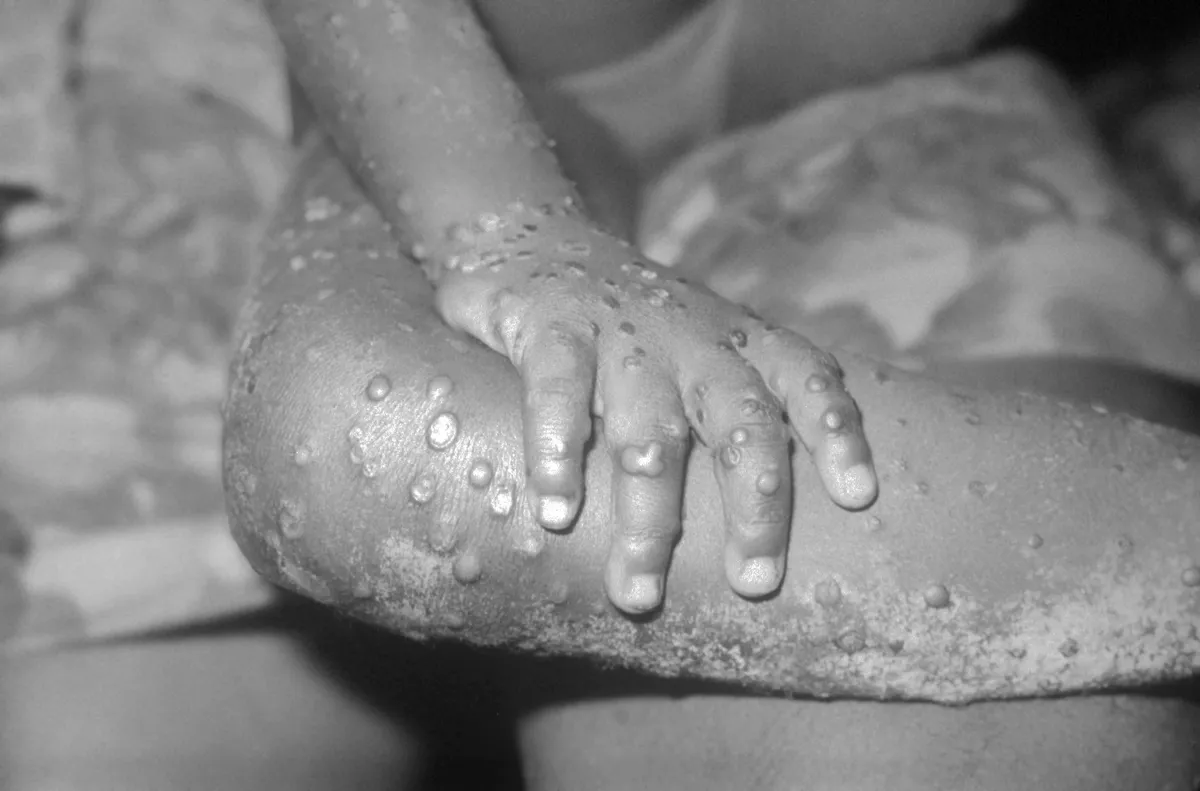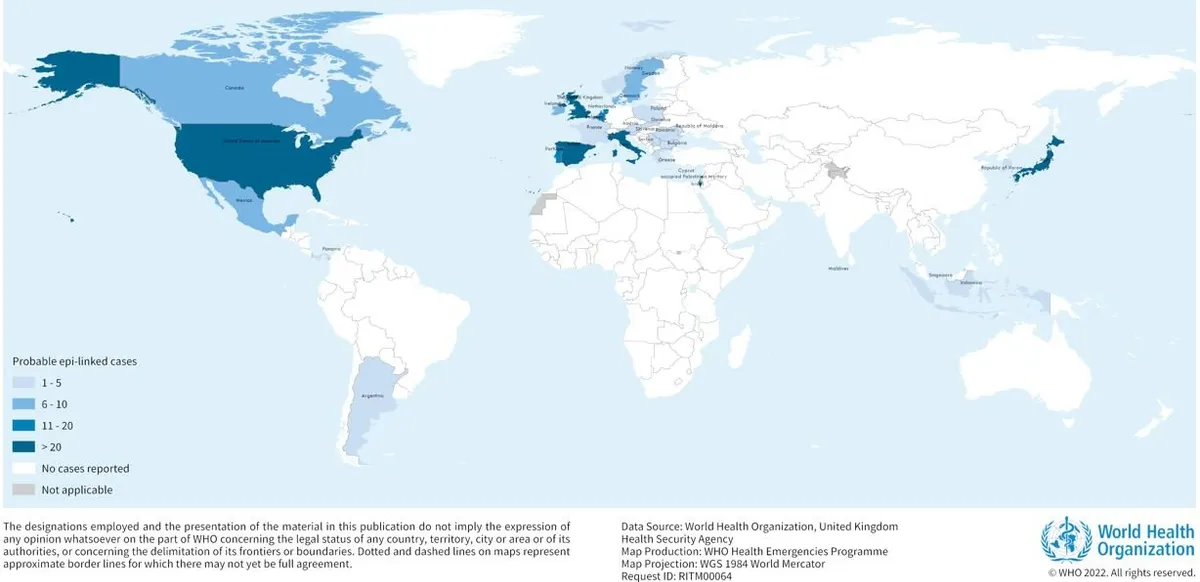Countries around the world continue to report new cases of monkeypox, with 257 confirmed and 120 suspected individuals with the disease globally according to the World Health Organization (WHO). As of 29 May, the outbreak has reached 23 countries. There have been no deaths associated with the new cases.
The UK Health Security Agency have reported a total of 172 cases of monkeypox in the UK since the first patient was identified on 7 May. Prior to this date, there had been only seven recorded cases of monkeypox in the UK since 2018.
Monkeypox is endemic in some countries, meaning cases are common in places like Nigeria, the Central African Republic, and the Democratic Republic of the Congo. The only previously recorded outbreak in a non-endemic country occurred in 2003, when 47 cases of monkeypox were reported in the US.
However, while scientists around the world are expressing concern about the outbreak, many are looking to the facts about the virus for reassurance. And the information we have suggests there is no cause for panic. Because the virus is similar to smallpox, there are already treatments and vaccines that can help stop the spread of monkeypox. The particular strain of the virus that is spreading currently is thought to have low mortality rates, somewhere between 1 and 3.6 per cent.
The risk to the general public is thought to be low, due to the way the virus transmits: it requires close contact with an infected person, unlike SARS-CoV-2, which can be passed around through the air. Also unlike COVID-19, people with monkeypox are not thought to be asymptomatic, meaning there is a low chance that anyone is walking around with the virus unknowingly spreading it to others.
Here's what we know about the monkeypox virus so far.
What is monkeypox?
Monkeypox is a 'zoonotic orthopoxvirus', which means it is a virus that has been transmitted to humans from animals (zoonotic) and is of theOrthopoxvirusgenus, whereas COVID-19 is caused by a virus of the Coronavirus genus. Other viruses in the same genus as monkeypox include smallpox and cowpox.
The virus was first discovered in 1958, in a lab in Denmark where scientists were working on polio vaccine research. The team noticed that some of the monkeys they were experimenting on had developed skin lesions. Then followed several outbreaks within monkeys, giving the disease its name.

The first case in humans was recorded in 1970, in the Democratic Republic of the Congo. Since then, monkeypox has spread among central and western African countries, becoming endemic in several.
There are two strains, or 'clades', of monkeypox that can affect humans: the West African clade and the Congo Basin clade. The former is the strain circulating in the current outbreak, and it is thought to cause less severe disease than infection with the Congo Basin monkeypox.
Could monkeypox cause the next pandemic?
It is hard to know how worried we should be about monkeypox, but virologist Dr Jeremy Rossman says it is unlikely that this outbreak will become a new epidemic or pandemic. The virus is much less transmissible than COVID-19, and we already have vaccines and treatments known to work against monkeypox.
But, it is important to remain aware of the outbreak and look out for any signs of monkeypox. If you are concerned about a chickenpox-like rash or any of the symptoms listed below, contact NHS 111.
What are the symptoms of monkeypox?
Once infected with monkeypox, the first symptoms to occur are fever, headache, muscle aches, backache, swollen lymph nodes, chills and exhaustion, according to the NHS. This is then followed by a rash that spreads around the body.
The rash caused by monkeypox can look like chickenpox or syphilis, and anyone who discovers an unusual rash or lesion on any part of their body should immediately contact NHS 111 or their local sexual health service.
Is there a cure for monkeypox?
Monkeypox is considered a self-limiting disease, meaning it usually clears up on its own without specific treatment. While there is no specific cure for monkeypox, treatments for smallpox can relieve some of the symptoms of the disease.
Data suggests that monkeypox has a death rate of between 1 and 10 per cent.
Is there a monkeypox vaccine?
The smallpox vaccine Imvanex has been shown to reduce the risk of severe monkeypox disease, with one study suggesting smallpox vaccines could be up to 85 per cent effective in preventing monkeypox.
In the UK, Imvanex is being administered to people who are thought to have been in close contact with someone infected with monkeypox. As of 30 May, over 20,000 doses of the Imvanex vaccine have been purchased by the UK Health Security Agency.
How many cases of monkeypox are in the UK?
So far, the UK Health Security Agency has confirmed 179 cases of monkeypox. Of these, 172 were identified in England. There has been one monkeypox case in Wales,four in Scotland and two in Northern Ireland.
In the UK and abroad, doctors are noticing that the majority of monkeypox cases are occurring in men who have sex with men. As the virus can be transmitted by close contact, and without firm evidence into the presence of monkeypox in genital excretions, the government is asking these people in particular to be aware of the symptoms of monkeypox, particularly if they have recently had a new, male sexual partner.

What is the R number of the monkeypox virus?
You may be familiar with the R number in reference to COVID-19 – it is the number given to viruses that shows how many people on average will be infected by any one person with the disease. The number depends on several factors: how many people are protected or vaccinated against the virus, how easily it transmits from person to person, and any measures put in place to slow the spread.
Measles is a highly contagious disease, so its basic R number (the average number of people that one infected person would pass it to, if there were no measures in place) is 18, while COVID-19 is thought to have an R number of 3.
Understanding the R number of monkeypox is difficult, however, because it is endemic in some countries and very rare in others. We can instead look at modelling for smallpox, which data suggests has a basic R number between 3.5 and 6.
Scientists who estimated this smallpox R number also predicted a "reasonably rapid epidemic rise" if an outbreak of smallpox should occur.
Why is monkeypox spreading now?
So far, there is no clear cause for the new outbreak of monkeypox. There are a number of theories currently under investigation, including the possibility that the monkeypox virus has mutated to become more transmissible – though initial data suggests the strain is very similar to the West African strain seen for a number of years.
In a Nature article, infectious-diseases epidemiologist Prof Raina MacIntyre is quoted suggesting the ending of widespread smallpox vaccinations could have weakened overall immunity to monkeypox and other viruses within the same genus.
Or, it could be that return to mass travel and large gatherings after the relaxation of COVID-19 restrictions has led to more opportunities for the monkeypox virus to spread. The COVID-19 pandemic itself could have played a part in the monkeypox outbreak, as infection with coronavirus is known to cause dysregulation of our immune system and may make us more susceptible to other viruses.
However, it is still very early days, and ongoing research can aide our understanding of the outbreak but may never reveal the exact cause, or causes.
Read more about viruses:
